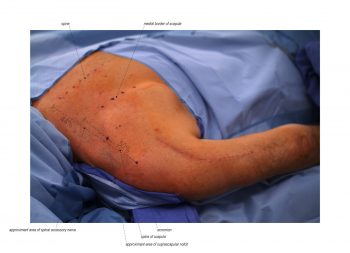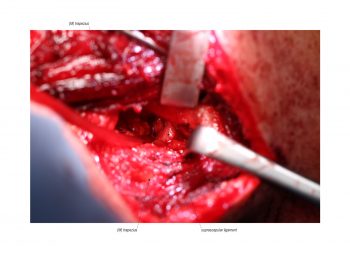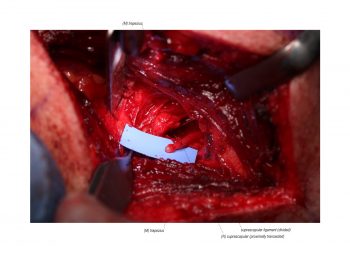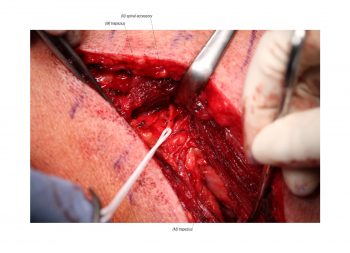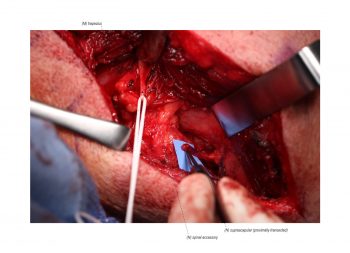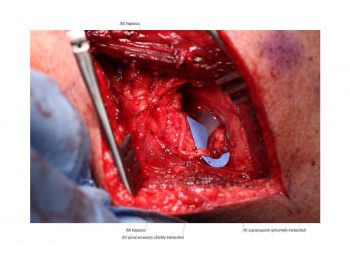Reconstructing shoulder function following a nerve injury is a challenge due to its dynamic movement originating from several muscles. The supra/infraspinatus muscles are critical for shoulder function in that they initiate abduction of the arm, external rotation, and stabilization of the shoulder joint. In upper brachial plexus injuries, it is common to find a deficit in the suprascapular nerve associated with the axillary and musculocutaneous nerves due to their C5,6 root origins. These patients present with no shoulder function or elbow flexion. Reconstruction includes nerve transfers to innervate the axillary and suprascapular nerves for shoulder function. An available donor nerve for restoring the suprascapular nerve includes the spinal accessory nerve from a posterior or anterior approach. The posterior approach utilizes the distal branches of the accessory nerve that innervates the inferior segments of the trapezius. This video portrays that posterior approach. In this case, a 49-year-old male presented post-Schwannoma resection from the upper brachial plexus with a shoulder and elbow flexion deficit. To reconstruct shoulder function, a spinal accessory to suprascapular nerve transfer was elected with a medial triceps to axillary nerve transfer. To reconstruct elbow flexion, a double fascicular nerve transfer was elected. This video details the posterior approach to reconstructing the suprascapular nerve using the spinal accessory nerve.
Standard 130422
Extended 130422
POSITION
Prone with respective side of upper back and entire arm prepped and draped.
INCISION
An incision is made along the superior border of the scapula with the landmarks for the suprascapular and spinal accessory approximated. The thoracic spine, medial border of the scapula and the acromion are identified and marked. The distal accessory nerve is located forty-four percent of the distance on a line drawn from the thoracic spine to the angle of the acromion on the shoulder. The suprascapular nerve is found traversing the suprascapular notch which is located at approximately the midpoint of a line drawn from the medial border of the scapula to the angle of the acromion.
REFERENCES
- Colbert SH, Mackinnon S. Posterior approach for double nerve transfer for restoration of shoulder function in upper brachial plexus plasy. Hand (NY). 2006 Dec;1(2):71-7. PMID: 18780028.
Disclosure: No authors have a financial interest in any of the products, devices, or drugs mentioned in this production or publication.
